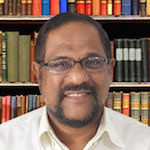Democracy Suffocated By Media And Oxygenated By The Judiciary

 Thomas Carlyle in his book On Heroes and Hero Worship: “Edmund Burke said there were Three Estates in Parliament; but, in the Reporters’ Gallery yonder, there sat a Fourth Estate more important far than they all.”
Thomas Carlyle in his book On Heroes and Hero Worship: “Edmund Burke said there were Three Estates in Parliament; but, in the Reporters’ Gallery yonder, there sat a Fourth Estate more important far than they all.”
While Pandit Jawaharlal Nehru with reference to India is famed to have called the media ‘the watchdog of our democracy’.
To call the ‘Press’ or the ‘Media’ as the fourth estate or the watchdog per se signifies its station in the temple of democracy. The Media besides its institutional nomenclature, functionally alludes to the collation and dissemination of information. This functionality is wide and varied encompassing democracy and good governance and, matters of public interest with relevance to society, economics, religion, culture and so forth. Along with these via discussions and debates educating and guiding the public. Of course, entertainment is an integral part too.
In the context of a government there is the Legislature, Executive and the Judiciary as the indispensable triad of democracy. Stability between them is ensured by the doctrine of separation of powers which enables maintain checks and balances. The news coming out of these three portals is given to the public by the media. Edmund Burke in order to emphasise the importance of the media said that the Fourth Estate is more important than the other three.
Limited Access
The country’s first television station was the Independent Television Network (ITN) which started broadcasting in April 1979. The new station remained independent only for two months as the government took control of it. Sri Lanka’s second state-owned television station – Sri Lanka Rupavahini Corporation (SLRC) – was established by the Sri Lanka Rupavahini Corporation Act No. 6 of 1982.
According to a research study by the Open University, as far as Sri Lankan Media industry is concerned, there are more than 60 radio channels, 20 television channels and 200 newspapers in all three languages. Only two market research companies operate audience rating systems on radio and television broadcasting in Sri Lanka. Yet the ratings systems operating in Sri Lanka have generally lacked transparency in terms of their methodology and process. (ISSN 2012-9916 © The Open University of Sri Lanka). This situation is exploited by the television owners to claim that they are the best or they are the number one. The common man is not aware of the intricacies of media rating systems. They can be easily fooled to believe in these fictitious claims.
Sri Lankan has a rural population of around 81% (of total population), according to the World Bank collection of development indicators. Only 19% are living in the city and urban areas. Access by the rural population to information disseminated by the print, electronic, social media, radio and the internet is obviously limited. The reason being lack of infrastructure, domestic economic priorities, ignorance, weak purchasing power and, in general, typical rural backwardness. It is not strange to note that there are many households without even a television set. If they have one it is connected only to the free to air channels. Mostly, the State television. Despite this the number of viewers is far greater when those who do not have television sets visit their neighbours to watch programs.
Distorted Reporting
It is essential that any news given in whatever form radio, print or electronic is presented with due accuracy and done so impartially. Public interest should be foremost in the minds of the news provider. Contextually, examine the following observations made about media reporting on the 2014 Aluthgama riots. “The mainstream media did not cover the events of Aluthgama as they unfolded. … The State media in particular presented a distorted and highly sanitised version of events. The editorial of the English medium state newspaper, Daily News on 17 June 2014, downplayed the incident by claiming it was ‘isolated’ and was being exaggerated. Privately owned newspaper ….. the Island’s editorial on 16 June 2014 insinuated that the blame lay with the Muslim community, as it claimed that participants at the BBS rally were attacked first.” (Post war religious violence in Sri Lanka, ICES & Equitas 2015.)

